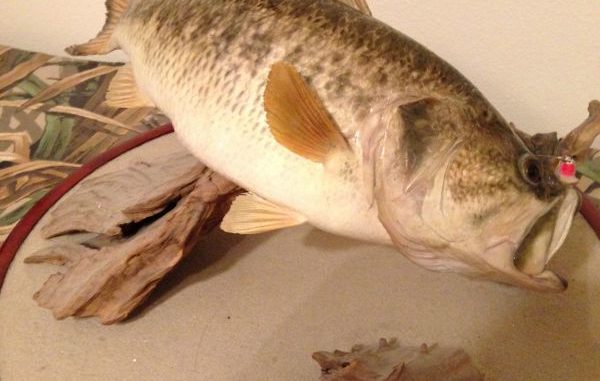
Start caring for your catch properly the moment it hits the deck, Hynes says
Just from the bite, you can tell it’s a good one, far more aggressive than previous strikes of the day. The bend in your rod and the screaming drag indicate this fish has some shoulders.
And all at once, the possibilities are flying through your head: Is this my personal best? Maybe even a state record?
After a moment that seemed to take years, the big brute finally tires and is brought boat-side, where it’s quickly netted and welcomed aboard.
The boat erupts in high fives and smiles, but the behemoth flopping around on the deck is likely already jeopardizing the quality of the mount you might seek from your local professional taxidermist.
It’s at this very moment, amongst the chaos and triumph of landing a trophy fish, that preparations start being made to ensure it arrives at your taxidermist in optimal condition.
“It starts as soon as the fish is brought on board the boat,” said long-time Pearl River area taxidermist Kevin Hynes. “You’ve got to take care of it.”
Proper handling is critical for all fish from bass to reds, but it’s especially important if you’re looking to mount a thin-skinned specimen like a speckled trout.
As anyone who’s ever put a fillet knife to a pile of specks can attest, their skin is much easier to cut through than other fish.
“The skin of a trout is very thin with tiny scales that come off easily, so it’s imperative that the fish be handled very carefully to make a good mount,” Hynes said.
Regardless of species, take the necessary steps as soon as the fish is landed if you’re contemplating a mount.
“The biggest mistake people make is letting their trophy fish flop all around the bottom of the boat,” he said.
Maintaining the skin and scales is critical to making the mount as realistic as possible while maintaining the natural beauty of the fish, Hynes said.
Similarly, be mindful of roughing up the fish with any kind of “grabber”-type tools that might also damage the skin or scales.
“Try to handle the fish as little as possible if you’re going to take pictures of it before putting the fish in the box,” Hynes said. “Lots of people want to use the various tools for grabbing a fish, but those can be very damaging to the skin and scales.”
When the photos are complete and it’s time to get that fish cooled down in the boat, the taxidermy prep continues.
“Your best bet is to wrap the fish up in a wet towel before putting it in the cooler,” he said. “That towel is thick enough to protect it from ice or sharp points from other fish, but it’s got to be kept wet.”
An even better situation would be for it to be chilled by itself if possible, he said.
And once you’re back to the landing or the house, it’s time to do one of two things: You can either get it to your local taxidermist immediately — prior to fully freezing it — or the fish can be stored at your house for delivery at a later date.
“Once you’re back to land, that fish needs to be carefully sealed up with the towel still wrapped around it and readied for freezing,” Hynes said. “I like to use a plastic bag, like a garbage bag, for wrapping the fish up — just make sure that towel in contact with the fish stays wet before freezing.”
When placing it into the freezer, Hynes noted that the fish should be kept in a flat position with nothing on top of it, though a slight bend to the fish should not present a problem once the mounting process begins.
He emphasized to never use anything absorbent like newspaper on a fish, as it will remove the moisture from the skin that’s critical to ensure a quality mount. And always keep in mind that the sooner the specimen gets to the taxidermist the better, as freezer burn can ruin prospects for a trophy mount.
In the world of taxidermy, the bottom line is that you’ll only get back as good a specimen as you provide, so keep these tips in mind so you’ll be ready if you or a buddy hooks a big one destined for the wall.


